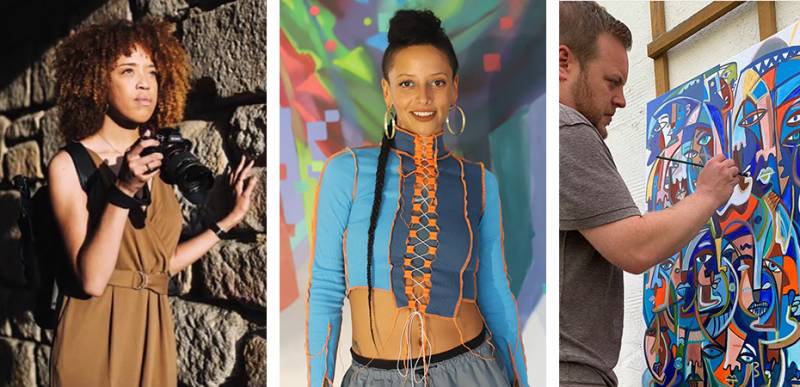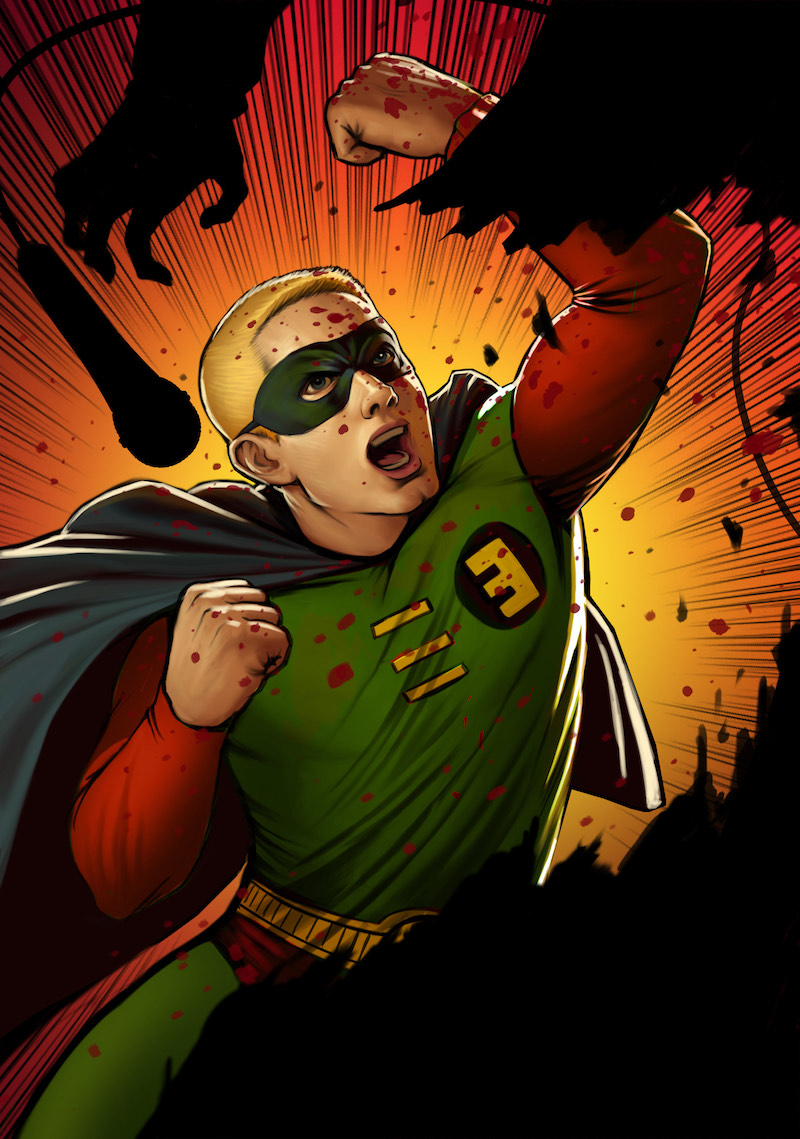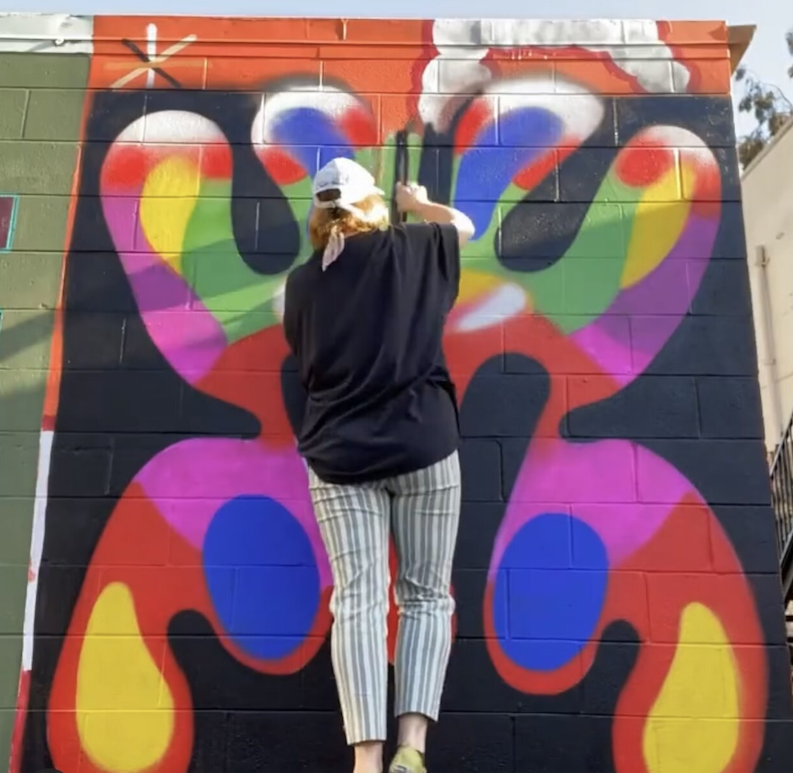Oakland photographer Brianna Mills didn’t know a ton about the worlds of blockchain and cryptocurrency when she minted her first non-fungible token, or NFT. But thanks to the support of an online community called Black Women Photographers and other artists on Twitter and Clubhouse, in May she sold her photograph Stormy Palm as an NFT for 0.25 Ethereum, equal to about $683 at the time of writing.
Like most NFT collectors, the new owner of Stormy Palm doesn’t receive a physical print. Nor do they get to claim the image’s copyright. Instead, a record of ownership is inscribed into a permanent log of data called the blockchain. The collector can keep the NFT or eventually resell it for a profit, at which point Mills could also earn a royalty—something artists in the United States don’t typically receive in the secondary art market when physical photographs, paintings or sculptures change hands.
“I wanna take off in this space because I’ve been interested in doing full-time photography,” Mills said. “If this is that stream of income that can get me there then I’m on board. I know people have been paying rent, they’ve been paying off loans—I’m interested in paying off my mortgage with this. There’s lots of opportunity for artists to set their price, talk that talk and find collectors in [another] audience.”
Some onlookers have regarded the NFT market as a bubble, with high-profile sales of digital files fetching head-scratching sums that defy the norms of the IRL art world. Seemingly out of nowhere, an artist named Beeple sold an NFT of a digital collage for a record-shattering $69 million, propelling him from Instagram phenom to one of the top-three biggest-selling living artists. Others have sold tweets and memes, like that GIF of a rainbow cat or the “Charlie Bit Me” video, for six- and seven-figure sums.
Beneath these upper-echelon auction prices, however, most NFT sales are much more modest. For Mills and an increasing number of up-and-coming artists, this new marketplace offers hope of meeting collectors and making sales using a peer-to-peer network, without as much reliance on the exclusionary gatekeeping of the traditional art world. And artists who have embraced this new format say it’s not just a fad—NFTs are already changing the way art is created and consumed.
Community is Essential to NFT Success
As with all things related to art, success at selling NFTs does depend on who you know. In most cases, it requires breaking into tight-knit online communities of blockchain enthusiasts and crypto investors on Twitter and Clubhouse, and getting them to care about your work. In the Black Woman Photographers Slack channel, Mills met a well-connected New Jersey artist named Diana Sinclair.
Sinclair, who just wrapped up her junior year of high school, has become an advocate for Black women in the NFT space. Collectors and artists alike consider her a trusted voice. She invited Mills and other members of Black Women Photographers to Foundation, an NFT marketplace, and shouted out their work on Twitter. An hour after Sinclair tweeted a thread of NFTs by Black women artists, a generous collector purchased all the pieces she posted, including Mills’ Stormy Palm.

“Through that people began trusting me as a curator, as a voice in the space and an advocate—I’ve been called a fairy godmother,” says Sinclair, who’s had several successful Foundation sales of her own.
Sinclair’s burgeoning success in the NFT space is also a product of finding a supportive online community. She was introduced to NFTs by another artist named Itzel Yard; the two bonded over their shared Caribbean heritage, and Yard showed her how to use Foundation. (Since then, Yard created a digital piece that sold as an NFT for nearly 500 Ethereum, or almost $1.4 million at the time of writing, at a fundraiser). Inspired by Yard’s generosity with her time and knowledge, Sinclair decided to pay it forward to other Black women artists. Now the people she’s supported, including Mills, are doing the same.
“I sold my piece because of community,” says Mills, adding that she found additional support in a Clubhouse room called Black NFT Artists. “It wasn’t sold because I was shilling my piece in all the Twitter threads—that wasn’t really getting me anywhere. It was after talking to people.”
“I was able provide a [Foundation] invite to two other women after I minted,” she adds. “I think the funding piece is the last bit that will help us all uplift one another and feel like we have an equitable piece of this NFT space.”

“There’s just something about selling NFTs—someone is buying stock in you as a person or as a creator, and it’s pretty magical to just have someone who believes in you that much,” says Castro Valley painter Gabe Weis, who has sold over 100 digitized versions of his paintings on the platform OpenSea for the average price of 0.6 Ethereum, or about $1,600 at the time of publication. He says his collectors include people he’s gotten to know at in-person galleries and on Clubhouse, investors who plan to flip his work for profit and even an art collector traveling the country in a van, who doesn’t have space for physical paintings.
“People see that I’m really in tune with the [NFT] community, trying to build the community at every opportunity—and I’ve been painting for 20 years, so it’s not [like] I’m going to be here today and gone tomorrow,” he says, adding that he believes that the vast majority of artists will be selling NFTs in the next 10 years. “I think it’s inevitable that every artist will eventually get into it because they’re gonna see other people getting royalties, they’re gonna see them getting to sell work all around the world without shipping all around the world.”
Weis thinks NFTs might be to visual art what Soundcloud was to music almost 10 years ago: a way to bypass traditional gatekeepers and create alternate pathways to success. Weis is connecting and sharing knowledge with other artists on Clubhouse rooms such as Bay Area NFT, where he has connected with other idealists who believe in blockchain’s potential to create a more equitable society by diminishing the power of large banks and other corporations. NFTs and cryptocurrencies exist on networks that allow peer-to-peer transactions without third-party apps and companies; the ledger of transactions is public and permanent, which advocates argue make commerce more efficient and transparent.
“We can interact without third parties, without a conglomerate like a bank basically storing and owning our money and then spending our money on things we don’t agree with necessarily—like running oil pipelines through Native land, for instance,” says Oakland muralist Bud Snow, who has been investing in cryptocurrency for years. (Playboy recently shouted her out on Twitter in a list of a women NFT artists to watch.)
“A lot of big banks are in support of the military and wars in other countries over oil,” she adds. “There are all these vested interests that these third parties have … that the blockchain is completely disrupting. That is the part that gets my blood rushing—more than the money, more than the volatility of these coins, I’m interested in what the blockchain is going to do for people when they embrace it.”




